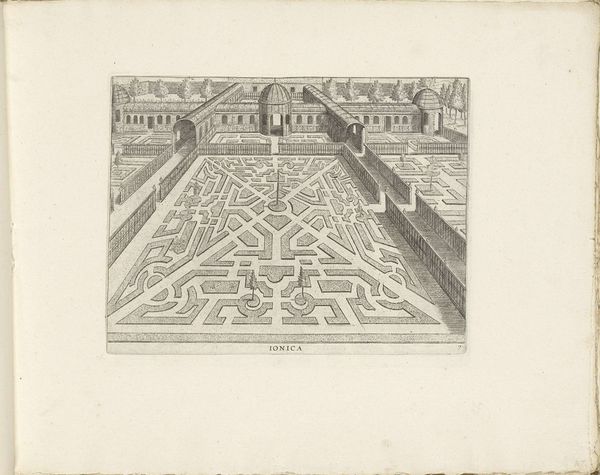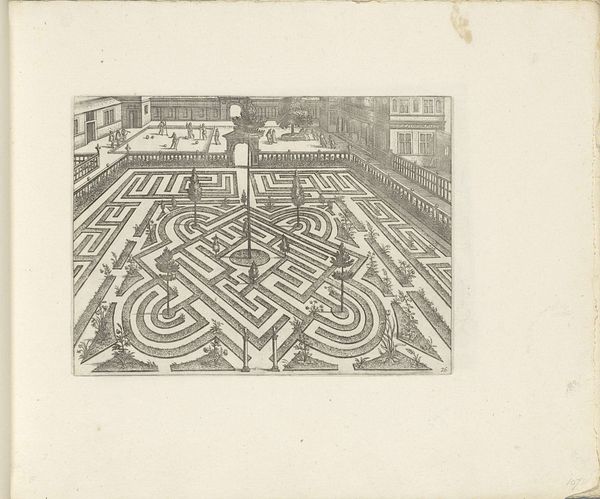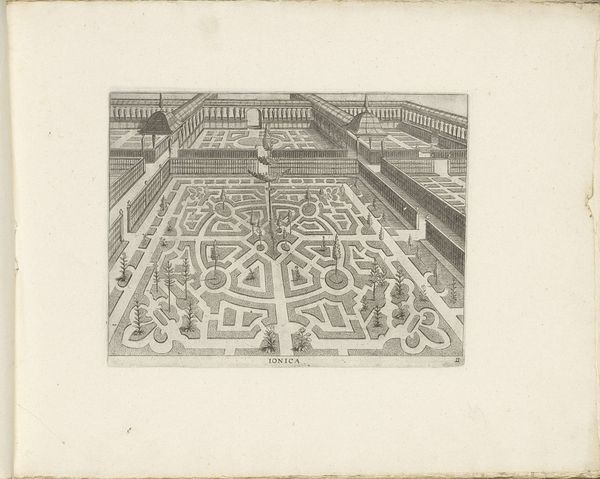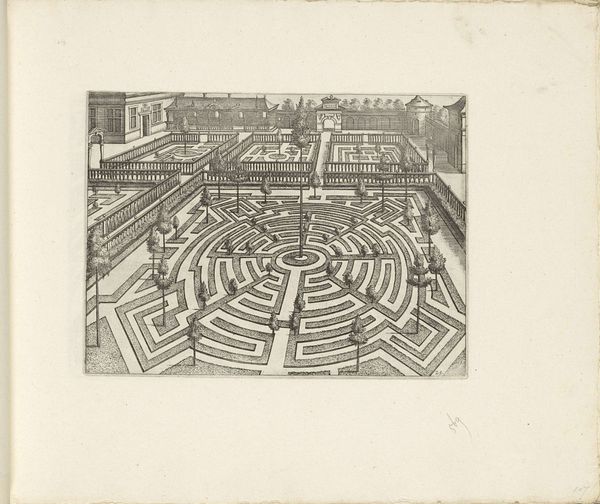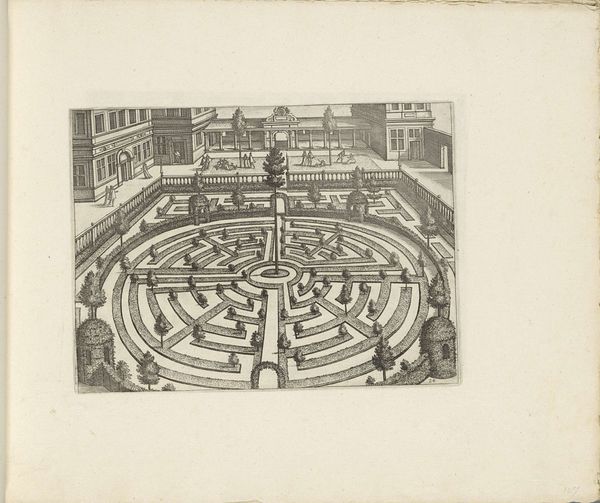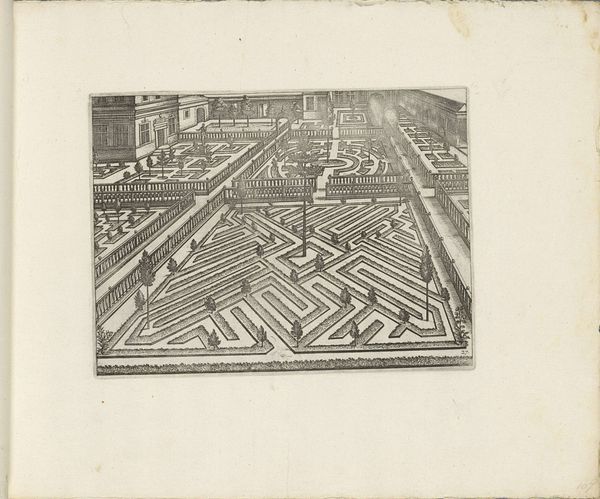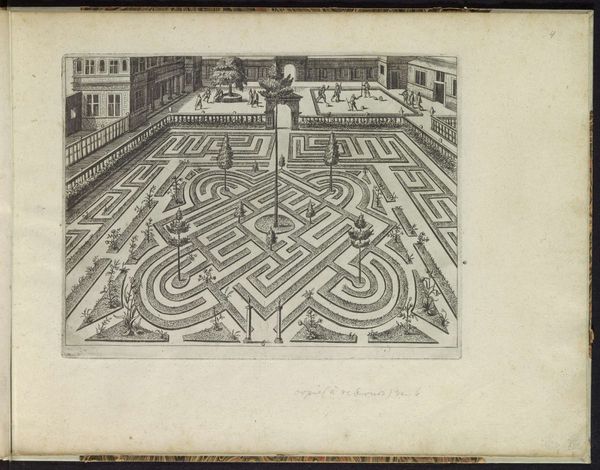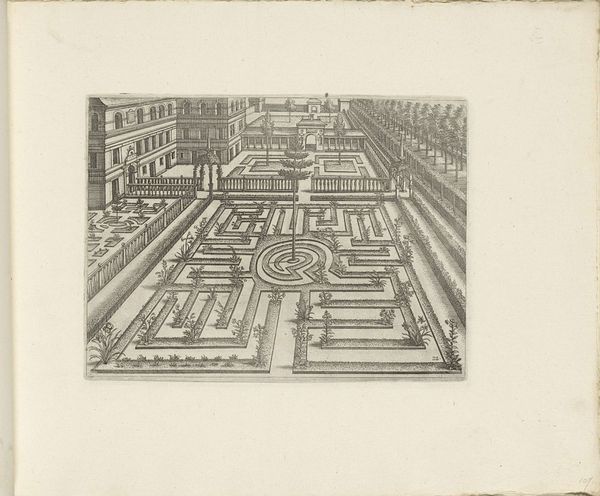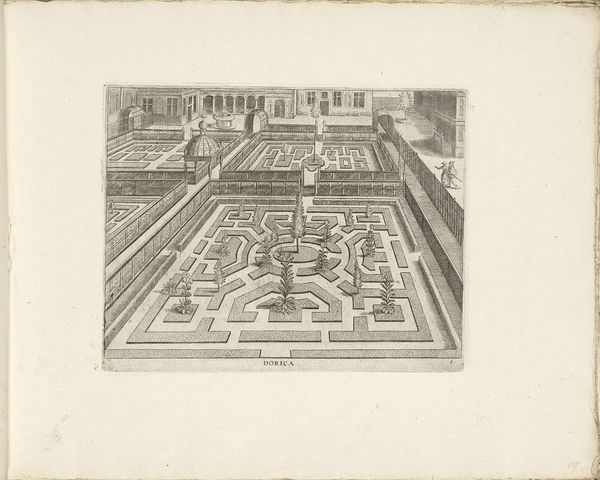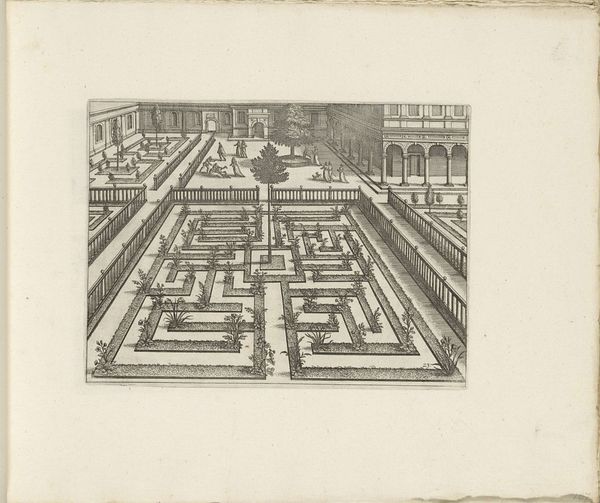
Tuin met centrale parterre met in de diagonalen compartimenten in de vorm van zuilen c. 1583 - 1640
0:00
0:00
print, paper, engraving
#
garden
# print
#
landscape
#
paper
#
11_renaissance
#
geometric
#
history-painting
#
engraving
Dimensions: height 190 mm, width 246 mm
Copyright: Rijks Museum: Open Domain
Editor: Here we have an engraving from circa 1583-1640, titled "Tuin met centrale parterre met in de diagonalen compartimenten in de vorm van zuilen" by an anonymous artist. It depicts a garden with a very precise, geometric design. It's strangely captivating, but also feels a bit…controlling. What do you see in this piece? Curator: What I see is a reflection of power structures made manifest. The perfectly ordered garden wasn't just about aesthetics; it was about control over nature, reflecting a broader societal desire for order and hierarchy. The very act of imposing such strict geometry onto the landscape speaks volumes. Do you notice how the central perspective directs your gaze? Editor: Yes, it almost forces you to see it from one particular viewpoint, emphasizing the formal layout. So you are suggesting this rigid structure isn't just decorative? Curator: Exactly. Consider who had the power to commission such a landscape. These weren't spaces for communal enjoyment, but demonstrations of wealth and status, reinforcing social stratification. Furthermore, the act of forcing nature into geometric shapes can be read as an early form of environmental exploitation, mirroring colonial attitudes toward land and resources. What might that mean in the context of, say, Indigenous land management practices of the period? Editor: That’s a powerful way to look at it. I hadn't considered the social and political implications embedded in something as seemingly benign as a garden design. It's about imposing a human idea onto the natural world. Curator: Precisely! By examining these historical contexts, we can uncover the ideologies that shaped not just the artwork, but the society that produced it. It makes you think differently about how we interact with nature today, doesn’t it? Editor: Absolutely, I'll definitely be pondering this print – and my place in the world – for a while.
Comments
No comments
Be the first to comment and join the conversation on the ultimate creative platform.
